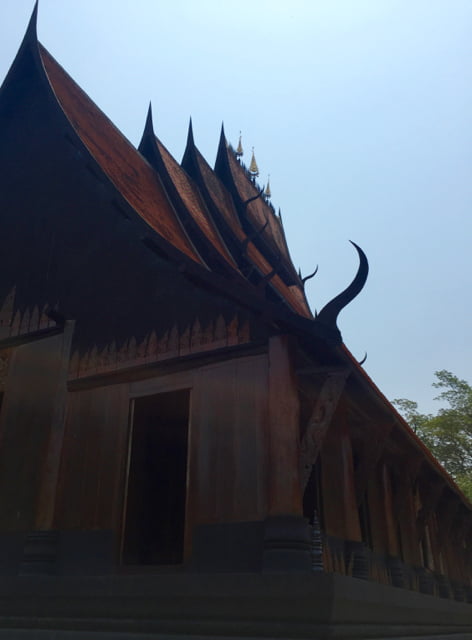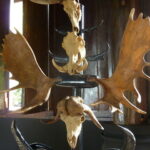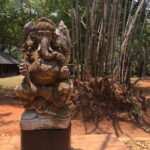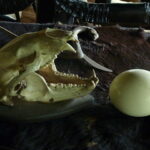During my adolescence I reveled in a dark fantasy world, fed by alchemy, witchcraft, the Lord of The Rings trilogy, black metal. Some of these rather eccentric tastes must have been acquired in a push to get as far away as I could from the spoiled upper-class brats that crowded the (admittedly quite elitist) grammar school I was attending. I didn’t fit in, so I chose to make abundantly clear that I was moving in the opposite direction, by dressing in black, listening to obscure music and poring over dark mysteries by candlelight, with every hair on my body standing on end with morbid fascination, fantasizing about how I was exploring territory that was beholden to the mad, the wicked and the wise. Meanwhile, my classmates were out, dancing.
Just before my A-levels, I decided all of it was a pretentious scam. I started listening to cool jazz and Frank Sinatra of the Nelson Riddle era. The big bands couldn’t be big enough and the roguish Italian charm of this man in a suit winking at the girls while effortlessly bossing the guys at the same time washed away all the previous doom and gloom in a torrent of blaring copper and California sunshine. I wanted to be like Old Blue Eyes.
Many other fads came and went, but I always kept a soft spot for all things dark, medieval and bewitching. At some point, I was hooked on World of Warcraft for months on end. I visited Prague after extensively studying Harry Mulisch’ The Procedure and Angelo Maria Rippelino’s Magic Prague for my thesis, and indeed the past seemed to shimmer just beneath the touristy surface, with the spirits of alchemists, occultists, priests, rabbis, kings, assassins, astrologers, and torturers swirling around the statues on the bridge and the pointed roofs of its towers.
When Game of Thrones came out… well, you get the picture.
One hot morning in May 2016, three days before I turn 35, my pubescent escapism struck me again, in a most unexpected place. It’s been over two months that I have been roaming Thailand. It’s a colourful country, with friendly people and exuberant religious life. Temples are bright red and gold, with glittering dragons guarding serene statues of the Buddha cast in every possible material, and if that happens to not have a bright colour itself, the Thai don’t hesitate to add lots of shiny trinkets and a not so subtle touch of colourful neon light here and there.
But here I was, at the Black House Museum near Chiang Rai. At 11 am, the temperature was well on its way to reach its peak of 41 degrees for that day. However, around the giant house, spiky, bare, and threateningly black, it seemed almost chilly – the chill that befits some Middle European, medieval fantasy, the brothers Grimm, Game of Thrones, and the Nordic onslaught of black metal that makes trolls jump out of the damp earth of the forest floor.
The house is filled with artifacts made of horns, skulls, skins and bones: giant thrones adorned with various bony parts of half a flock sheep and a few buffaloes, garnered around long tables with giant snakeskin runners. Horned skulls of all shapes and sizes lining rooms, or built up as totem poles, or spread out decoratively inside a round pagoda-like structure, guarded by skinny statues with immense penises, an entire elephant skeleton resting under the elevated floor of another lugubrious dwelling. The fainthearted have no business here.
Baan Dam, the Black House, is the fantasy of Thai “National Artist” Thawan Duchanee (1939 – 2014). Allegedly, he undertook this project to explore the dark side of humanity, in opposition to the kitschy project on the other side of town: Wat Rong Khun, the White Temple.
He did not have to venture far: the formal language of Thai architecture, the pointed roofs, the spires of temples, the slender houses on stilts – robbed of their colours and painted pitch black they look exactly like a medieval town in the heart of Europe – or a scene from any fantasy film. And while death seems to be taboo in Thai society, as it is nothing but a rather smelly temporary phase between two reincarnations (also temporary), the artist objectifies it here, by putting up the mortal remains of animals as decoration, functional or not.
While the place looked like its occupants, be it Vikings or evil spirits or the Riders of Rohan, could return any moment, the reality was that my visit coincided with the arrival of five coaches full of Chinese tourists, swarming around in their impossibly bright and mismatched clothes, wielding selfie sticks and giant cameras, chattering and shouting across vast distances without cessation.
Would they feel a shiver running down their spine upon this contact with the dark realm of death and witchcraft? I’m quite sure that black romanticism is lost on the vast majority of the Middle Kingdom’s folk. But then, that was what drew me to it as an adolescent in the first place: that it was not for everyone. After World of Warcraft, Game of Thrones, the Hollywood adaptation of Lord of the Rings, and the selfie sticks around this place, it’s hard to feel like the mad, the wise or the wicked anymore.















